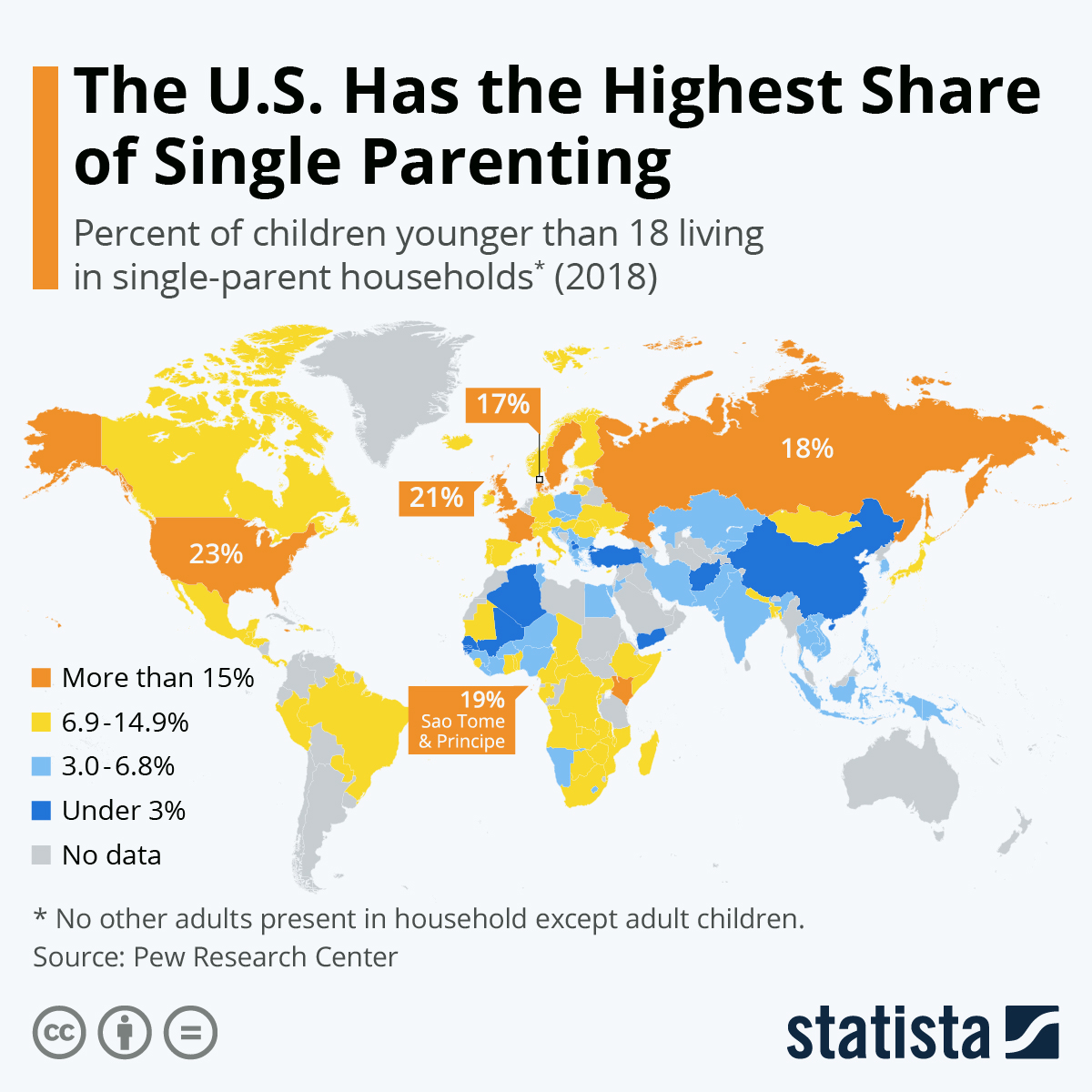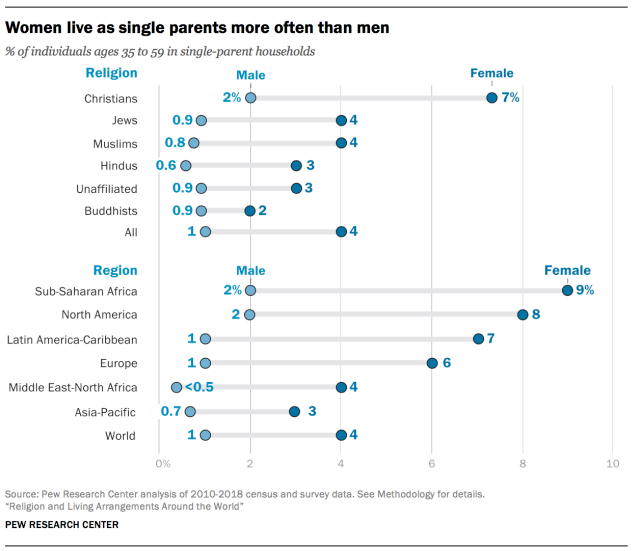Study reveals an upward trend in the rate of single parenting in the U.S.
The United States has the highest rate of single parenting in the world, a 2018 study from Pew Research Center reveals.
Among the 130 countries included in the study, the United States has the highest share of single-parent households at 23%, nearly a quarter of the nation’s households.
According to Pew Research, the U.S. has observed an upward trend in the rate of single parenting over the previous decade. This coincides with both the decline in marriage rates and births outside marriage observed within the same period.
For their study, Pew Research defined a ‘single-parent household’ as a household consisting of one adult and at least one child (biological, step, or foster) aged below 18.
Global Highlights
Globally, the most common living arrangement for children would be a two-parent household, accounting for roughly 51% of the population. Meanwhile, extended-family homes are the second most common at 38%.
Even though it is fairly common in the U.S., single-parent homes make up only 7% of the households over the world. The least common are polygamous homes at just 3%. The latter is fairly common in sub-Saharan Africa and Muslim-majority Gulf countries where polygamy is legal.
In terms of religious affiliation, Christian households are the most likely to have a single-parent setup, with around one in ten (11%) of the households practicing the religion recorded to have this arrangement.
Promoting equality
In terms of sex assigned at birth, women are more likely than men to be single parents. This is true across all religions and geographical regions that are included in the study, as shown in the chart displayed above.
Globally, single mothers are struggling to put food on their tables, primarily due to the myriad of barriers which prevent them from uplifting their economic conditions.
In the midst of a global pandemic, some pregnant women have been forced to work in order to sustain their families. Others are compelled to leave their jobs in order to avoid the risk of being infected with COVID-19.
According to FastCompany, the current U.S. policy structure disadvantages women, especially those who are single mothers. The existing U.S. laws fuel a disparity between single- and two-parent families since the former receives only half the number of weeks compared to the latter.
Providing the same number of weeks of paid leaves for both types of living arrangements is just one of the steps that the U.S. can take in order to promote gender equality.
Moreover, the U.S. is also the only developed nation which does not guarantee paid parental leave to all of its workers. The provision of such a guarantee is also a huge stride towards equality.
While a single-parent household may not be viewed by some religions or some traditions as the best set-up for raising children, the role of the government to protect women and children transcends these perceptions. This kind of home is as real and as in need of support from the state.
If you want to know more on the specifics of how the study was conducted, you can check the full methodology. For more insights, you can also read Pew Research’s full report.












